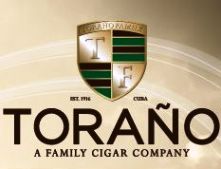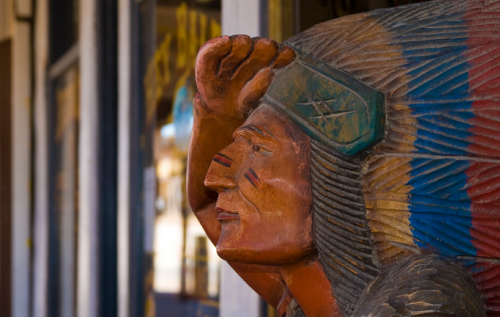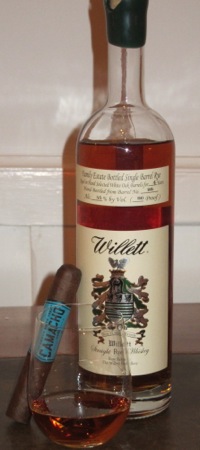Cigar Review: E.P. Carrillo New Wave Connecticut Gran Via
15 Sep 2014
When the man who made La Gloria Cubana a household name started his new family-run company in 2009, few in the cigar industry doubted he would be successful in his new venture. To date, by seemingly every measure, this “mad genius†of tobacco he has been.![]()
 One undertaking that has helped solidify Ernesto Perez-Carrillo’s post-General Cigar success has been the New Wave Connecticut blend. In 2011, it joined the E.P. Carrillo portfolio, which now also includes Cardinal, Inch, E-Stunner, La Historia, and the Core line.
One undertaking that has helped solidify Ernesto Perez-Carrillo’s post-General Cigar success has been the New Wave Connecticut blend. In 2011, it joined the E.P. Carrillo portfolio, which now also includes Cardinal, Inch, E-Stunner, La Historia, and the Core line.
Made at Tabacalera La Alianza S.A. in the Dominican Republic, New Wave Connecticut is E.P. Carrillo’s first Connecticut. It sports an Ecuadorian Connecticut wrapper around a Nicaraguan binder and filler tobaccos from Nicaragua and the Dominican Republic. It is available in six sizes: Brillantes (5 x 50), Stellas (5.1 x 42), Divinos (6 x 52), El Decano (6 x 60), Selectos de Oro (6.1 x 43), and Gran Via (7 x 49).
I picked up a five-pack of Gran Vias for $35. This long, somewhat slender vitola has a thin, golden, almost pale wrapper with minimal veins and a wrinkled surface. The foot emits pre-light notes of green raisin, dried apricot, and sweet hay. A simple guillotine cut reveals an easy cold draw. In the hand, the cigar feels a little light, and there are some soft spots.
Those who expect all Connecticut-wrapped cigars to be mild will be surprised by the New Wave Connecticut, even from the start. The body at the outset is decidedly medium with flavors that include black pepper, cedar, and honey. As one might anticipate, there are also tastes of cream, nut, and sweet hay. The texture is toasty and buttery.
The strength builds at the midway point and beyond as notes of pepper and warm tobacco take hold. The finale tastes more Nicaraguan than Connecticut. All the while the combustion properties are solid, including a straight burn line, true draw, and good smoke production. Only the ash leaves something to be desired; it is flaky and temperamental.
I would agree with Ernesto Perez-Carrillo that the Divinos is probably the better vitola. The Stellas is no slouch either. But the Gran Via is excellent, and a tremendous value at only $7. I award it four stogies out of five.

[To read more StogieGuys.com cigar reviews, please click here.]
photo credit: Stogie Guys


 1) General Cigar has announced it has acquired the brands associated with the Toraño Family Cigar Company. The move comes four years after Toraño re-launched itself at the 2010 industry trade show—taking back control of its own distribution from a
1) General Cigar has announced it has acquired the brands associated with the Toraño Family Cigar Company. The move comes four years after Toraño re-launched itself at the 2010 industry trade show—taking back control of its own distribution from a  E.P. Carrillo is celebrating its fifth year. La Flor Dominicana is celebrating twenty years since Litto Gomez started his cigar venture in 1994. But the most anticipated anniversary in 2014 is that of Padrón’s 50th year. In an industry that puts out limited release cigars for virtually any reason, that’s something worth celebrating. And celebrate Padrón did with two cigars and four blends.
E.P. Carrillo is celebrating its fifth year. La Flor Dominicana is celebrating twenty years since Litto Gomez started his cigar venture in 1994. But the most anticipated anniversary in 2014 is that of Padrón’s 50th year. In an industry that puts out limited release cigars for virtually any reason, that’s something worth celebrating. And celebrate Padrón did with two cigars and four blends.

 The
The  Patrick Ashby
Co-Founder & Editor in Chief
Patrick Ashby
Co-Founder & Editor in Chief Patrick Semmens
Co-Founder & Publisher
Patrick Semmens
Co-Founder & Publisher George Edmonson
Tampa Bureau Chief
George Edmonson
Tampa Bureau Chief